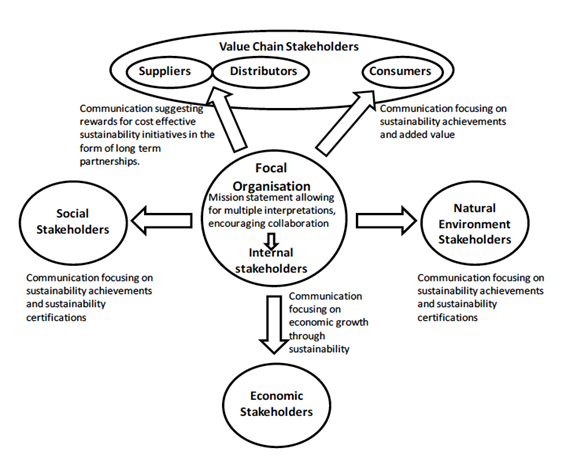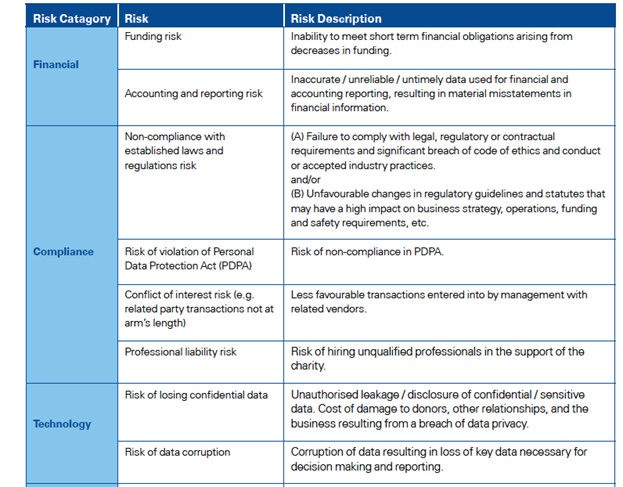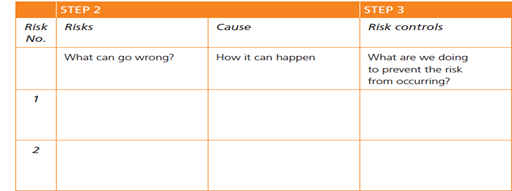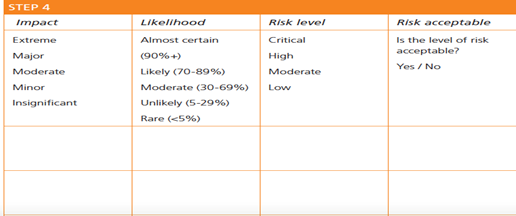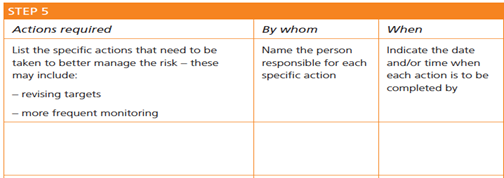Charity fundraising for homeless mothers in London
Executive summary
The charity fundraising event’s mission is to raise funds to cater to the homeless moms’ needs in London. The money will be used to provide temporary and long-term support to homeless mothers in London who find themselves homeless, regardless of the reason or circumstances. This charity fundraising event aims at raising 100,000 dollars for providing access to an array of services for 300 homeless mothers in London. The two event’s objectives are; first, to raise money for integrated and closely coordinated services for 300 homeless mothers for three years in London and second, to engage the congregations, donors, well-wishers, and community organizations to provide volunteers. This report is organized into the following sections; mission and objectives, performance stakeholder management, project breakdown structures, project schedule and cost estimation, risk management considerations, economic evaluation and value generation considerations, and future post project delivery considerations. Implementing the stakeholder’s cycle would be critical in assessing stakeholder needs, perceptions, and expectations because non-profit organizations depend on the most critical decisions stakeholders. When measuring an event’s success, determining the Key Performance Indicators (KPIs) is crucial because they differentiate an event’s performance, either good or poor. KPIs tell the managers if significant progress is being made toward the objectives. Event planning will be guided by a critical path model that provides visibility to an event giving the proper direction about what should be done and who should be responsible. The budget for the event is estimated to be roughly 83,000 dollars. The event milestones are presented using a Gantt chart because it represents the timetable alongside the tasks that need to be accomplished. The events’ risk management plan will be achieved through registering, monitoring, communication, consultation, and training staff about risk management. The event’s economic aspect involves using the money to provide professional services to support the homeless mothers and eradicate self-sufficiency barriers such as lack of education. The reports end by offering recommendations for future charity events, such as focusing on e-philanthropy.
When defining a project, theoretical concepts such as Earned Value Management (EVM) and Critical Path Method (CPM) have universal applications. Each project is unique and the application of CPM and EVM depend on the type of a project (Warburton and Cioffi, 2014 p1). The success of a project depends on the relationship between the labor rates and project structure such as cost and schedule, which defines project management requirements. A common theme in project management is the inevitable nature of change which dictates that project planning should create room for modification as the project proceeds. For instance, the budget could increase, or the schedule can shift and there should be room for unforeseen changes. Despite the usefulness of having a fundraising strategy, fundraising is not a legal requirement for both non-profits and charities, but it plays a significant role in raising money to bring social and economic impact.
There are at least 320,000 homeless people in Britain, which corresponds to one individual in every 200 citizens in Britain. Among the individuals at a high risk of being homeless include Asians, black, young, and ex-convicts. More than 726 homeless individuals died in 2018 in the UK, a rise from 2017 by 22% (GoFundMe, 2020 p1). Charity events such as fundraising are approaches to helping homeless individuals. A fundraising event for the homeless mothers is detailed n this report. The project focuses on investing in positively influencing the lives of homeless mothers in London.
Mission
The mission of the charity fundraising event for Homeless mothers is to raise money for providing temporary and long-term support to homeless mothers in London who find themselves homeless, regardless of the reason or circumstances.
Aims
This charity fundraising event aims at raising 100,000 dollars for providing access to an array of services, including temporary housing, employment readiness training, linkage to behavioral health treatment, access to public benefits, local food banks, and other services that promote health, independence, and self-sufficiency to 300 homeless mothers in London.
Objectives
- To raise 100,000 dollars for integrated and closely coordinated services such as literacy, education, mental and behavioral healthcare, and job training for 300 homeless mothers for three years in London.
- To engage the congregations, donors, well-wishers, and community organizations to provide volunteers to help coordinate integrated and closely coordinated services for 300 homeless mothers for three years in London.
Charity fundraisers have different economic values. From these events, the managers can raise funds and awareness, critical in boosting stakeholder relationships. The organizations can develop multi-event management approaches, which have better results when compared to singular events. The strategic charity events can create relationships with the respective donors, which is essential in boosting the relationships with the sponsors. According to (Brown, 2018 p3), organizations can promote financial sustainability by developing structured change opportunities. Implementing the stakeholder’s cycle would be critical in assessing stakeholder needs, perceptions, and expectations. Such an approach promotes mutual benefits from all parties, which leads to better management of their needs (Scandelius, and Cohen, 2011 p13). Stakeholder prioritization is part of the strategies that rank the stakeholder-based on urgency, power, and proximity. The perceptions that the stakeholders have will always influence the communication expectations in the organization. With effective communication, it is possible to establish the issues arising from the stakeholder prioritization. In the communication process, engagement helps in planning; this can promote an effective stakeholder management process. The inclusion of a monitoring approach leads to better feedback and the ability to include communications in the entire cycle of stakeholder management. Shown in figure 1 is a model for managing stakeholders.
Figure 1: Stakeholders management model.
Source: (Scandelius and Cohen, 2011 p13).
Non-profit organizations depend on in most of the critical decisions stakeholders. The stakeholders include the employees, political class, clients, the public, sponsors, and local leaders. These stakeholders influence the achievement of effectiveness in managing their needs and requirements. One of the practical approaches for modern stakeholders is the use of social media, which promotes engagement. Most non-profit organizations use social media to come up with reliable platforms for engagements. The stakeholders can access the information regarding the various companies from social media. According to (McGrugan, 2020 p1), Facebook, and Twitter posts effectively attract and collect information from the stakeholders. The author recommends using three posts in a week, which attracts the target stakeholders’ attention. These posts can be used as strategic sources of information regarding the stakeholders. A significant post should attract the stakeholders, meaning that it should present the company’s exciting information. The posts should attract the stakeholders’ inputs since such an approach encourages companies to collect feedback. In such a case, content creation becomes a critical component of building a conversation with the stakeholders. The type and nature of content affect the interactions’ levels in terms of the number of visits (Bradley-Swanson, 2019 p119). The content should relate to the customers and encourage visitors.
For non-profit organizations, events are critical determinants of organizational success. Therefore, another engagement seeks to promote multiple events extend reach, which seeks to promote community engagements. Organizations with several annual events can experience better engagements with the respective stakeholders (McGurgan, 2020 p1). Through these events, organizations can acquire new donors and goodwill in the community. Access to donors promotes the ability to meet the community demands since they provide the funds required to run the activities. In scheduling the events, the organizations should focus on a broad scope of stakeholders, seeking to expand the potential income sources. For instance, the concerts developed can create opportunities for collecting talents and revenues, which is part of the programs for boosting organizational success. During these events, the organizations sell tickets, which promote revenue collection. The events can attract grand openings, raffles, race events, bingo nights, and antique shows, all of which influence community participation. According to (Nguyen, 2018 p15), the scale of events determines the scope of targets, influencing the need for large-scale events. Events have a critical role in soliciting funds, which emanates from the relationships created with the donors. The organizations should set the pace for developing successful events. The main benefit of these events includes raising awareness and building relationships with the sources of funds. The sense of community encourages the stakeholders to acquire adequate information regarding the stakeholders.
The fundraising plans should consider the stakeholders’ expectations. The plan should provide information on the goals, strengths, priorities, needs, and target groups for the respective types of information (Nguyen, 2018 p9). An effective fundraising plan leads to better planning, which should have a vision and mission. The vision gives the bigger picture of the strategic choices, while the mission provides the specific strategies that will help achieve the vision. By building relationships with the respective stakeholders, it is possible to determine a reliable source of funding. Leaders can develop surveys to evaluate the stakeholders’ issues and concerns (Bradley-Swanson, 2019 p119). The fundraising plan aims to ensure proactive strategies towards the sponsorship, leading to efficiency in managing the respective fund’s requirements.
Stakeholders influence the effectiveness of leaders in non-profit organizations. From the stakeholders, leaders can design internal measures and policies that promote sustainability. Bradley-Swanson (2019 p122) argues that senior leaders in non-profit organizations should develop strategies that accommodate all stakeholders’ requirements. The study by (Bradley-Swanson, 2019 p123) identified the different areas that leaders should use to promote reliability and effectiveness. These areas use the mission and vision statements, workforce engagement activities, relationships with the community, and leadership engagements with the various stakeholders. All these four themes can guide the leaders in non-profit organizations to promote stakeholder engagement strategies. Financial sustainability in these organizations should emanate from stakeholders’ ability to collaborate effectively, including communications, to identify and deal with the various issues.
The managers have a role of planning, controlling, and directing work in the organizations. Work can be measured using the earned value, which involves setting metrics for performance measurement (Bradley-Swanson, 2019 p9). Some of the practical techniques used in earned value are the time taken for each effort and the results’ tangibility. From the mission statement, organizations can explore the different expectations and engagements relating to the various events. Successful events should have a reliable earned value, based on the nature of activities. According to (Bradley-Swanson, 2019 p9), some of the fundamental approaches towards earned value integrates quality assurance, stakeholder engagement, and the presence of activities for inspection. The event managers should address the data points, which include creating forecasts for the project. The earned value should be measured and calculated, which could be monthly or weekly.
-
Performance Measurement and Management of Quality
Measures of Financial performance are vital for organizers of non-profit organizations and benefactors. They offer critical data on (a) effectiveness of expending valuable assets, (b) expenditures sustained, (c) revenue growth and (d)financial success of different programs of the organization (Epstein, and Buhovac, 2009 p8). Data on the financial health of a non-profit organization is of critical value to donors. Evaluation of charities is established on annual financial data every charity discloses to the public. The financial health of an organization is assessed in two broad dimensions: Effectiveness of an organization is examined in four performance categories: (a) division of program expenses by entire functional expenditures, (b)Division of administrative costs by full operational expenses, (c) Division of fundraiser expenses by whole functional, and (d) fundraising efficiency tabulated through the division of charity’s fundraising expenses by all received contributions. (Epstein and Buhovac, 2009 p8). The capacity of an organization is examined in three categories of performance: (a) Main income growth over four years, (b) program expenses growth over four years, and (c) working capital divided by total expenses. Numerous non-profit organizations are beginning new performance measurement models and performance measures to trace their non-financial performance. An organization’s attempts to be more responsive to measuring performance against the strategy and the mission an organization is focused on is reflected. A group of non-financial performance measures correctly complete the performance measures to capture the organization’s success in enhancing its clients’ lives- spiritually, socially, and economically.
When measuring an event’s success, it is vital to determine the significant performance (KPIs) that differentiate an event’s performance, either good or poor. All event organizers oversee the overall number of registered participants and amount raise; these explain the source of money and what changes to make affect growth and make corrections on fundraising efforts. KPIs enable clarity on the cause of the event’s entire performance. The following sections outline several KPIs for formal occasions and provide standard benchmark metrics (Bhagat, McCarthy, and Snyder, 2012 p6-18):
First, the Average online gift amount refers to the average amount of money a donor gives online when an event participant asks for their support. This measure positively influences the entire proceeds of the event. For endurance events with a high fundraising minimum, fundraisers tend to ask for higher gift amounts, resulting in a higher average online gift.
Second, fundraising participants’ recruitment and coaching is the most significant influence an organization has on the event’s success. Participants’ motivation and investment are required, depending on the type of event, resulting in different fundraising behaviors. Participants are expected to fundraise, which brings high fundraising participation. Non-competitive events are free to join in, making participants make self-donations or even fundraise to support the event, unlike competitive event participation that charge between 25 and 50 dollars as registration fee.
Third, comparing two events is close to impossible as different factors differ from event to event. The location, season, mission, activities, and socioeconomic status of participants varies for other occasions. It is impossible to compare two events as organizers would compare. However, one can observe people’s fundraising behavior in similar circumstances and consider participants’ fundraising behavior in comparison.
Forth, group registration for participation is like to raise more funds and high fundraising levels than individual participants who register to participate sorely. Education and empowerment should be provided to team captains by events coordinators to fundraise at higher rates. Team participation should be encouraged in fundraising events, whether competition or camaraderie.
Fifth, to encourage event growth, event organizers should focus on keeping their present participants, enabling them to participate every year. For this study, a returning participant is defined as someone who registered online in 2019 and returned to register online again under the same name and email address in 2020. It can be cumbersome to assess the number of participants who return every year since participants could register via different channels, using a different name or a different email address. Due to these setbacks, the number of returning participants could appear low. The outlined trend below can indicate the number of returning participants. Endurance participants may return online at closely twice the competitive and non-competitive participants.
The measures of engagement comprise; Website: traffic, sources, behavior on the web, conversion rates. Social media measures would include; the number of fans and followers, demographics, likes, shares, comments. The Email list measures would consist of; opens, click-through, opt-outs, and the number of active emails and interaction for six months. The other measures would include; the overall revenue raised online via channel/program, new online donors, and Average gift. These measures are aimed at the quality of the results (Howard and Rawsthorne, 2020 p1). These outcomes can be examined using; Excel and google drive, Database –standardized reports/queries, Google Analytics, and Email marketing tools.
The charity event will create a powerful bond with local partners that help pervade gaps in services and have local expertise on board towards homelessness and homeless mothers’ issues. The provision of shelters will be through local churches and food provision by three local restaurants. In the job training program, the city library provides online job searches, with volunteers provide training skills on interviews. Training will be offered to twenty volunteers to watch over children as their mothers participate in class. A curriculum developed by the London Department of Economic Development will be adopted. The event’s purpose is to come up with solutions to homelessness by providing education and advocacy. Engagements such as strategic planning, community involvement, and relationships will be a part of the event. The organizers will be men and four women of different colors and leaders in their respective fields and organizations, representing law, health care, and social services. Non-profits are held accountable through three principal mechanisms: the rule of law, self-regulation, and transparency, holding non-profit behavior up in clear view for donors, the media, and others to see (Robinson, 2003 p173). Leaders should ensure accountability at all fundraising stages.
-
Planning Breakdown Structures;
An event planner should have a timeline to work on to remain on track and budget. A timeline (critical path) is an efficient method and frequently used in event planning. The charity event consists of managing dozens of tasks, dependencies, and people (Chen and Hsueh, 2008 p1290). A critical path provides visibility to an event giving the proper direction of what needs to be done and the staff’s responsibilities. Coming up with a critical path for an event can be done in 4 significant steps. First, a breakdown of the project should be done: outlining all undertakings required to finish the project using a work breakdown structure that is a hierarchical decomposition of the project. Second, the estimation of task duration by knowing how the time each task takes. This includes seeking counsel from other people to acquire an accurate estimate of the time for various functions. The third is determining task dependencies. Task dependency refers to a state where a task cannot start before the previous job is completed. It is vital in the proper management of tasks. Forth, Adding Milestones as these milestones enable keeping track of achieving baseline schedules. Shown below is a critical path.
Table 1: Critical path for the homeless mothers’ charity event
| Six months before the event |
| · Writing down objectives |
| · Picking a date |
| · Basic budget breakdown |
| · Shortlisting the venue |
| · Potential venue visits |
| · Creating a team to help in the organization |
| · Draft a marketing plan for both off and online engagements |
| Four months before the event |
| · Write a basic timeline. |
| · Marketing and PR plan begins. |
| · Supplier searching |
| · Refining the budget |
| · Brand collaterals designed |
| · Floorplanning |
| · Planning for hotel accommodation for the crew |
| · Drafting event running order |
| · Applying for required permits |
|
Two months before the event |
| · Confirmation with all suppliers |
| · Drafting health and safety procedures |
| · Refining the budget |
| · Outlining the role of staff and support members |
| · Collating signage for toilets, cloakrooms among others |
| · Sending out invites |
| · Briefing a security firm |
| · Booking catering equipment |
| Two weeks before the event |
| · Distributing the final production schedule to the suppliers |
| · Briefing photographer |
| · Collating the final guest list |
| One week before the event |
| · Cross-checking adherence to all the requirements |
| · Refining the budget |
| · Petty cash last-minute purchases |
| · Confirming with suppliers. |
Source: self-development using Ms wor
Project Budget Over six months
The budgets will be developed in conjunction with the strategic plan implementation process.
| A. Planning | Costs in $ | ||
| Strategic Planning Consultant | 5,000 | ||
| Research | 2,000 | ||
| Staff/Board Planning Retreats | 1,500 | ||
| Facilities
Transport |
10,000
5,000- |
|
|
| B. Fundraising | |||
| Campaign case, collateral, video | 10,000 | ||
| Membership in professional and networking | 2,500 | ||
| List acquisition & Mailing | 3,000 | ||
| Prospect Research | 3,000 | ||
| Part-time campaign assistant | 2,000 | ||
| Writing services | 5,000 | ||
| C. Marketing, PR | |||
| Website development and Marketing | 15,000 | ||
| Newsletter | 3,000 | ||
| Media relations work | 12,500 | ||
| D. Staff Development | |||
| Related staff training | 5,000
|
|
|
| Miscellaneous | 2,000 | ||
| Total 6 months budget | $83, 000 |
Source: Self-development
The events milestones refer to the management tools that will be used to delineate the project schedule. The milestones note the activities and deadlines from start to finish. It is a useful tool for scheduling and ensuring the managers can track all the activities without confusion (Royer, 2000 p10). One tool that helps in scheduling s the Gantt chart is a visual representation of the timetable alongside the tasks that need to be accomplished. The Gantt chart for the charity fundraising event is shown below.
Table 2: The Gantt chart for the charity fundraising event
| Project management stages | 1st month | 2nd month | 3rd month | 4th month | 5th month | 6th month | Remarks |
| Stage1. Initialization | |||||||
| Stage 2. Planning | |||||||
| Stage 3. Execution | |||||||
| Stage 4. Monitoring and control | |||||||
| Stage 5. Closure |
Source: Self-development using Ms word
One of the demands for effective risk management is assigning duties to different strategies in risk management. These strategies include review, registering, monitoring, communication, consultation, and training of risk-related topics. The aim is to ensure that all the people involved understand the processes and need for risk management (Charity Council, 2017 p7). During the event management, the organizers should consider the specific roles of risk managers regarding the specific role players. The teams can include the spectators, contractors, and participants, all of whom influence the risk management approach. Risk management should be continuous, whereby the managers should set the pace for planning and implementing risk management plans. The first start is planning the events, which identifies all the stages involved in planning all the event stages. The risk management should record all the activities since they provide the reference points for the audits. All documentation should help decide on the suitable risk management plan since it incorporates all the information relevant in the accident or incident register and the respective post-event reports.
Charities should have a system that promotes risk management. The system comprises several steps that promote the structural approach in managing risks (Charity Council, 2017 p7). The first step is identifying the risks, which involves searching, identifying, and describing all risks that affect the organizations’ strategic objectives. The second step is a risk assessment that entails prioritizing and contemplating on the risks to the organization, using the risk assessment matric. The matrix assesses the impacts of risks and the likelihood of their occurrences. The third step is managing the risks, which involves integrating the controls or approaches for mitigating the risks, based on their likelihood to occur. The last step is monitoring and reporting the risks, which comes from the risk reviews. Risk reviews and monitoring aim to ensure the managers have updated information on the organization (Charity Council, 2017 p7). All ERM processes should focus on processes that can be changed to accommodate any operating environment changes.
Charities have many concerns when it comes to risks. For instance, non-compliances lead to risks. From non-compliances, the organizations risk losing sponsorships, which affects the accessibility to funds. Another risk is desperation for the sponsors, which affects the relationship with donors. The third risk entails challenges in partnerships that affect fundraisers’ suitability in collecting adequate funds for the organization. Partnerships can increase the number of funds that the organizations get. The organizations should have designated roles and responsibilities to reduce friction in the fundraising process. The partners depend on the memorandum of understanding (MOU) that defines the various factors that would influence the nature of partnerships (Non-profit Risk Management Center, 2020 p1). Respecting the donors is a critical determinant of leadership’s role in acquiring effective relationships with the partners.
Unintentional display of disrespect to the donors is another risk that affects the sustainability of the organizations. Another possible risk is the lack of transparency in the dealings, which affects the donors’ relationships. The issue of transparency depends on the terms set by the donors. Full compliances ensure that donors develop trust in the dealings of charity organizations. The sixth risk comes from the chances of not implementing the programs in the plan. The charity organizations may decide to cancel, trim or close programs due to various reasons. The impact is a loss of trust from the donors, which affects any planned programs’ sustainability.
Fundraising is an essential strategy for all non-profit organizations. An effective fundraising program should promote the financial stability of the organization. All non-profit organizations should have a team that persuades fundraising efforts in achieving the company’s mission. According to the (Non-profit Risk Management Center, 2020 p1), risks affect all non-profit organizations’ facets, including the fundraisers. The team and organizers of these events should consider the possible risks and develop mitigation and management measures. The aim is to reduce the severity and implications of risks. Shown below are the critical risks in a charity event;
Figure 2: Key risk in a charity event
Source:(Charity Council, 2017 p7)
The event risk management profile will comprise of the following tables;
Figure 3: Identifying controls for each risk
Source: (sparc.org.nz, 2007 p23)
Figure 4: Performing a risk analysis
Source: (sparc.org.nz, 2007 p23)
Figure 5: Evaluating the risks
Source: (sparc.org.nz, 2007 p23)
The charity event will expand and enhance the self-sufficiency model for homeless mothers. Under this model, the money raised will address the basic human need for shelter and food that homeless people are experiencing. The money will also provide a wide array of professional services to support the individuals and address obstacles to self-sufficiency. This model recognizes that homelessness is not only a nighttime concern but seeks to provide support services to the homeless beyond traditional overnight shelters.
The event is committed to the diversification of revenue streams and funding sources. This will involve collaboration with other charity funders and government entities to support its array of programs and services. The program will be developed with the commitment and involvement of different service partners providing various aspects of the program. These partners are committed to providing these services to homeless mothers on an ongoing basis. The active fundraising department will be dedicated to bringing in discretionary revenue to build infrastructure and hire staff to institutionalize the new programs. With this event, discretionary funds are expected to increase to allow the organization to reach more homeless mothers n London.
Adapting the event operating model applied in this event will help achieve the next event’s strategic goals and objectives. An operationalization’ phase for for the event will involve reviewing processes, tools, strategic approaches, and policies that work produce the best results for the current and future event. In the future, it is recommended that there should be free attendance when all sets of criteria are achieved. This would include a waiver for all the parts of the event, such as entertainment, refreshments, food, transport, among others. Free attendance will most likely attract new donors and supporters for the next event. The next recommendation is to embrace social marketing, which does not only relate to social media marketing. According to (Neilson, Brouard, and Armenakyan, 2012 p27), social marketing refers to programs that focus on bringing social change using commercial marketing concepts. Such programs would include a combination of fundraising, volunteer, sales of merchandise, and recruitment, among others. The other recommendation is focusing on e-Philanthropy, which involves e-giving through the web or online donations (Neilson et al., 2012 p27). This concept allows well-wishers to donate through electronic transfer of funds the charity events. It could save time and resources that re needed for physical events.
-
Conclusion
In summary, with more than 320,000 homeless people in Britain, there is a need for a solution to help these people out, especially with the current pandemic. The majority of homeless people in Britain are Asians, black, young, and ex-convicts. Because of the challenges that homeless people face in London, more than 700 homeless people died in 2018. One way to help these people is through charity fundraising. The charity event detailed in this report aims to positively influence the lives of homeless mothers in London. The event aims to raise 100,000 dollars for offering an array of services to the homeless mothers for the next three years to make lives independent. Such services are temporal housing, free education, and job application coaching. The money to be raised in this event will ensure long term solution for homeless mothers in London. The charity event has economic implications for both the homeless mothers and London in large. Holding physical events is expensive; it is recommended that nonprofits should focus on e-philanthropies with the internet’s help.
Peachy Essay essay services team offers a wide range of services including Sociology Writing Help:
– Sociology Assignment Writing Services
– Sociology Assignment Help
– Sociology Essay Help
– Sociology Essay Writing Service
– Sociology Dissertation Writing Services
– Sociology Dissertation Help





